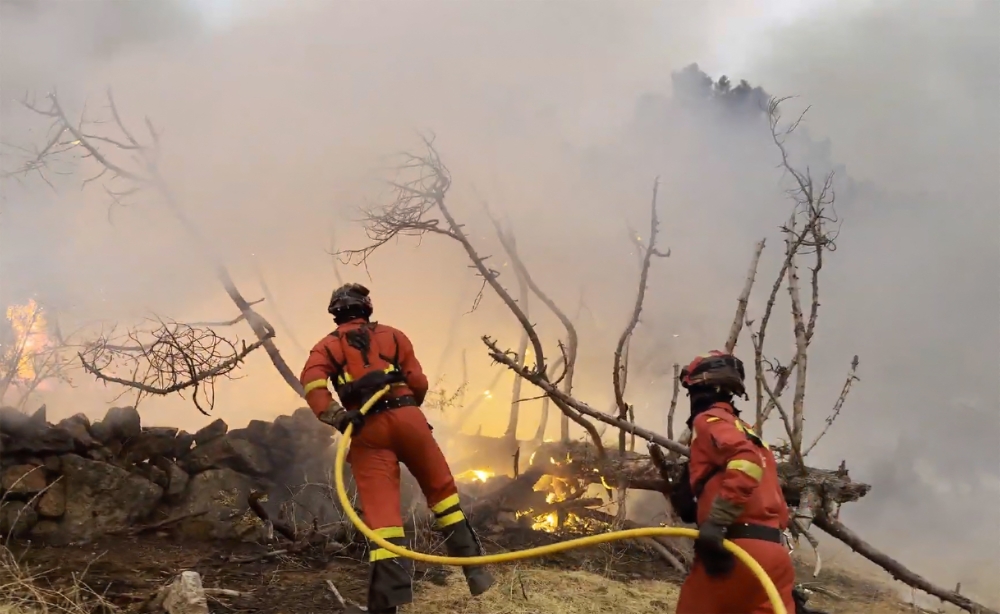Spanish authorities announced the evacuation of over a thousand people on Sunday in the northwestern part of the country due to spreading wildfires fueled by high temperatures and strong winds.
Local officials stated that around 400 people were displaced from the town of Carucedo and its surroundings, while approximately 700 others were evacuated from several towns near Las Médulas, a UNESCO World Heritage site known for its stunning landscapes and its history as a gold mining area during the Roman era.
The regional government leader of Castile and León, Alfonso Manoiko, stated that experts suspect many of these fires were deliberately set.
Firefighters explained that high temperatures and strong, frequently shifting winds are hindering their efforts to contain the flames.
The wildfires have also spread to northern regions of Galicia and Navarre, as Spain endures a heatwave entering its second week, with temperatures nearing 40°C in many areas.
Las Médulas
Las Médulas is a stunning historical landscape in northwestern Spain, known for its striking red-earth formations and ancient Roman gold mines. Developed in the 1st century AD, it was one of the largest open-pit gold mines in the Roman Empire, using advanced hydraulic engineering to extract ore. Today, it is a UNESCO World Heritage Site, celebrated for its unique beauty and archaeological significance.
Carucedo
Carucedo is a small village in the León province of Spain, known for its proximity to the stunning Las Médulas, a UNESCO World Heritage Site. This ancient Roman gold-mining site, dating back to the 1st century AD, transformed the landscape into dramatic red cliffs and caves. Today, Carucedo serves as a gateway for visitors exploring the natural and historical wonders of the area.
Castile and León
Castile and León is a historic autonomous community in northwestern Spain, formed in 1983 by merging the regions of Old Castile and León. It was once the heart of the medieval Kingdom of Castile and played a crucial role in the Reconquista, the Christian reconquest of the Iberian Peninsula from Muslim rule. The region is renowned for its rich cultural heritage, including UNESCO World Heritage Sites like the cities of Salamanca, Ávila, and Segovia, as well as its Gothic cathedrals, Romanesque churches, and iconic castles.
Galicia
Galicia is an autonomous region in northwest Spain, known for its distinct Celtic heritage, lush green landscapes, and vibrant cultural traditions. Historically, it was a medieval kingdom and a center of pilgrimage due to the Camino de Santiago (Way of St. James), which leads to Santiago de Compostela, home of the famed Cathedral of Santiago. The region has its own language, Galician (Gallego), and a rich folklore of music, dance, and seafood cuisine.
Navarre
Navarre (Spanish: *Navarra*, Basque: *Nafarroa*) is a historic region in northern Spain, once an independent kingdom that played a significant role in medieval Europe. Known for its rich cultural heritage, it blends Basque and Spanish traditions, with landmarks like the Pamplona Cathedral and the famous San Fermín festival (running of the bulls). Today, it is an autonomous community of Spain, celebrated for its diverse landscapes, from the Pyrenees to the Ebro River valley.






